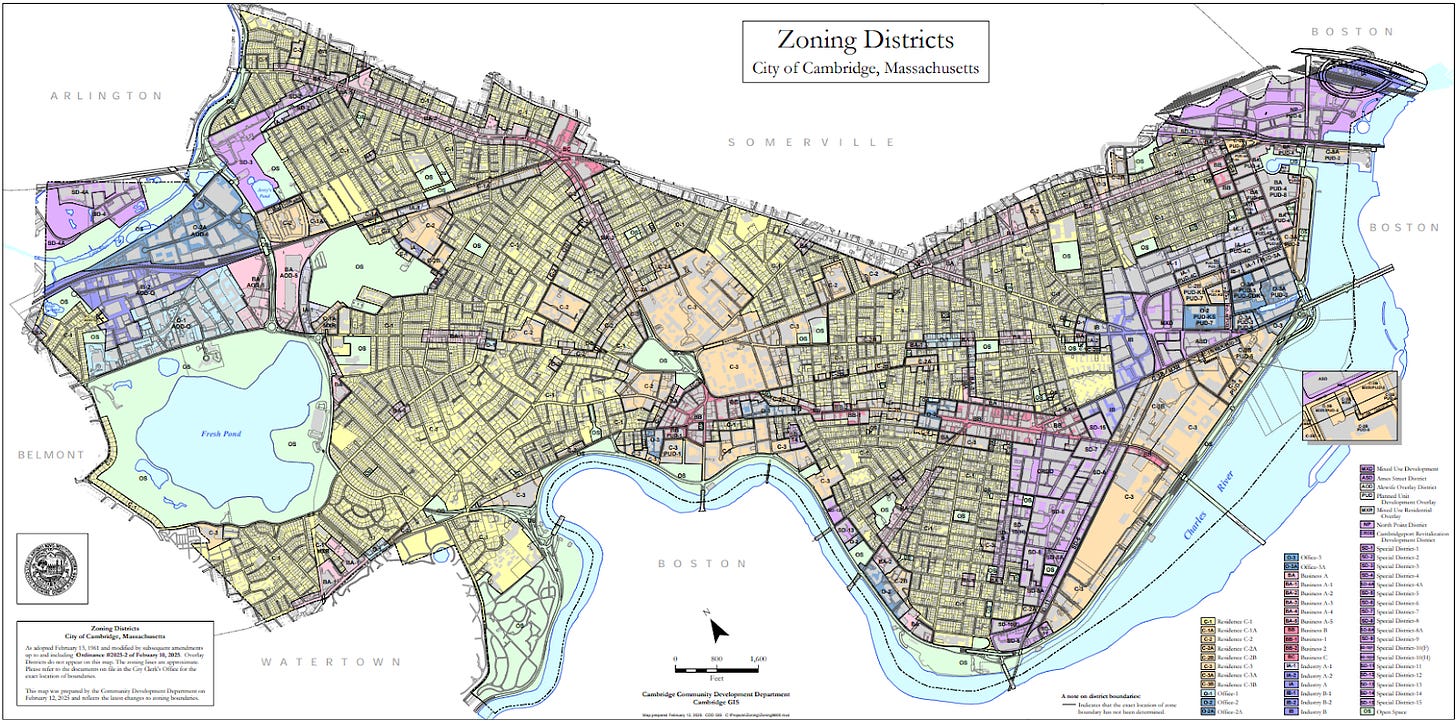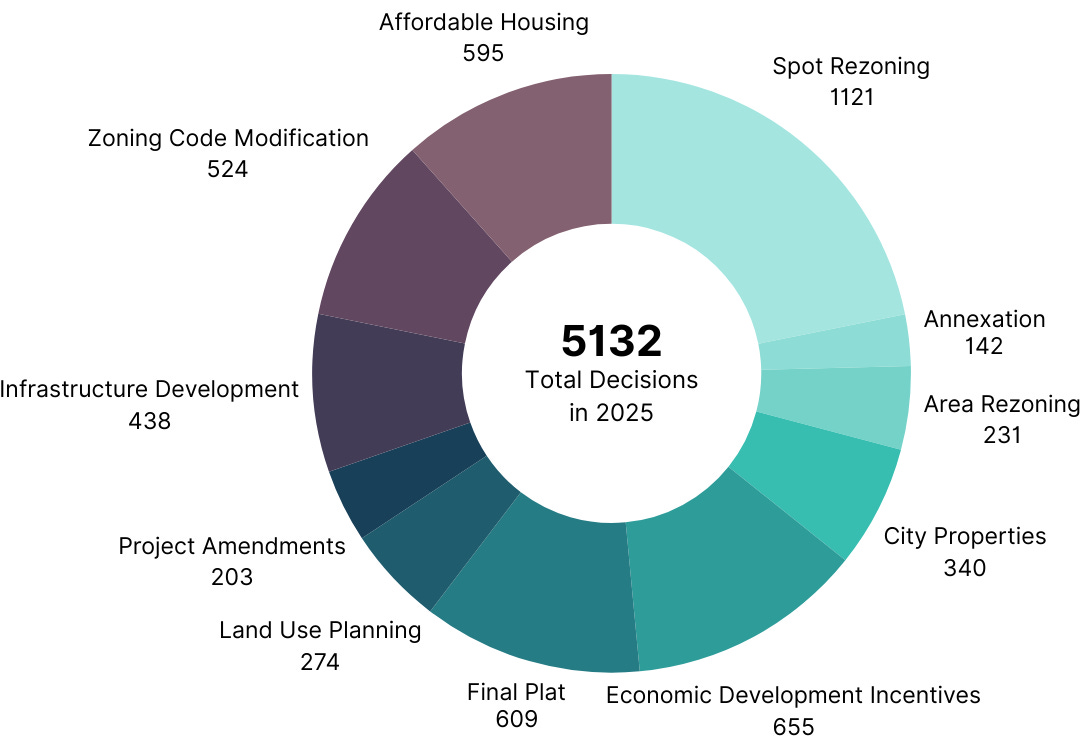What's Happening in Local Land Use | Q2 2025
Tracking the past three months of notable local land use and zoning decisions
Real estate is—and will always be—a local business. The direction of our built environment is driven not by big decisions in Washington but by thousands of little decisions made every month by city councils and planning boards.
So we’ve partnered with ReZone on a quarterly feature capturing the most notable, impactful, and unique local land use decisions made over the past 90 days. The decisions offer a lens into where urban America is heading—and, just as importantly, where it’s not.
Todays’ letter will feature everything from rollbacks of single-family zoning to more ADU legalizations to new “ACU” concepts. And we’ll also discuss some of the most interesting large-scale projects that won approval last quarter.
Let’s dive in.
Cambridge, MA eliminates single-family zoning
Cambridge, Massachusetts introduced zoning by dwelling unit count in 1924 and the city has steadily tightened restrictions since. Today, Cambridge’s zoning rules are so restrictive that city councilor Burhan Azeem estimates 85% of the city’s residential units are out of compliance with the in-place zoning code. Azeem, 28, is Cambridge’s youngest councillor and the founder of Abundant Housing MA, a group advocating for statewide housing reform.
With Azeem’s help, Cambridge passed a landmark reform this past February, permitting by-right construction of multifamily and affordable housing in all areas except “Open Space” and eliminating single or two-family residential zoning. Notably, Cambridge’s reform also tackled some of the thornier requirements—such as setbacks, parking requirements, and FAR caps—that have limited the effectiveness of other cities’ zoning liberalizations. For instance, consider the revised development standards for the most restrictive district (Residence C-1):
Min. Open Space Ratio: 30%
Max. Stories Above Grade: 4 (with exceptions that allow for 6)
Max. Building Height in feet: 45 (with exceptions allowing for 74)
Min. Front Yard Setback in feet: 10
Min. Side or Rear Yard Setback in feet: 5
Min. Parking Requirements: 0 (gone)
FAR requirements: 0 (gone)
“Mass production is a key strategy to bringing down housing construction costs,” said Azeem in a conversation with ReZone. “We've created by-right laws so you can design a 4- or 6-story building across the city easily.”
The Cambridge city council is now discussing additional rules to permit ground floor retail as well as advocating for state-level reform such as the legalization of point access block apartments.

More ADU adoptions
The ongoing debate pitting statewide mandates against local control regarding ADUs continued in Q1. In recent years, states have increasingly used preemption to override local zoning and ensure ADUs are broadly permitted.
In our analysis, we’ve found that cities from Riverside to Corona to San Diego have been adjusting to state mandates (such as SB 1211 and AB 2533) by eliminating restrictive parking requirements, expanding allowable ADU sizes, and legalizing previously under-permitted units.







